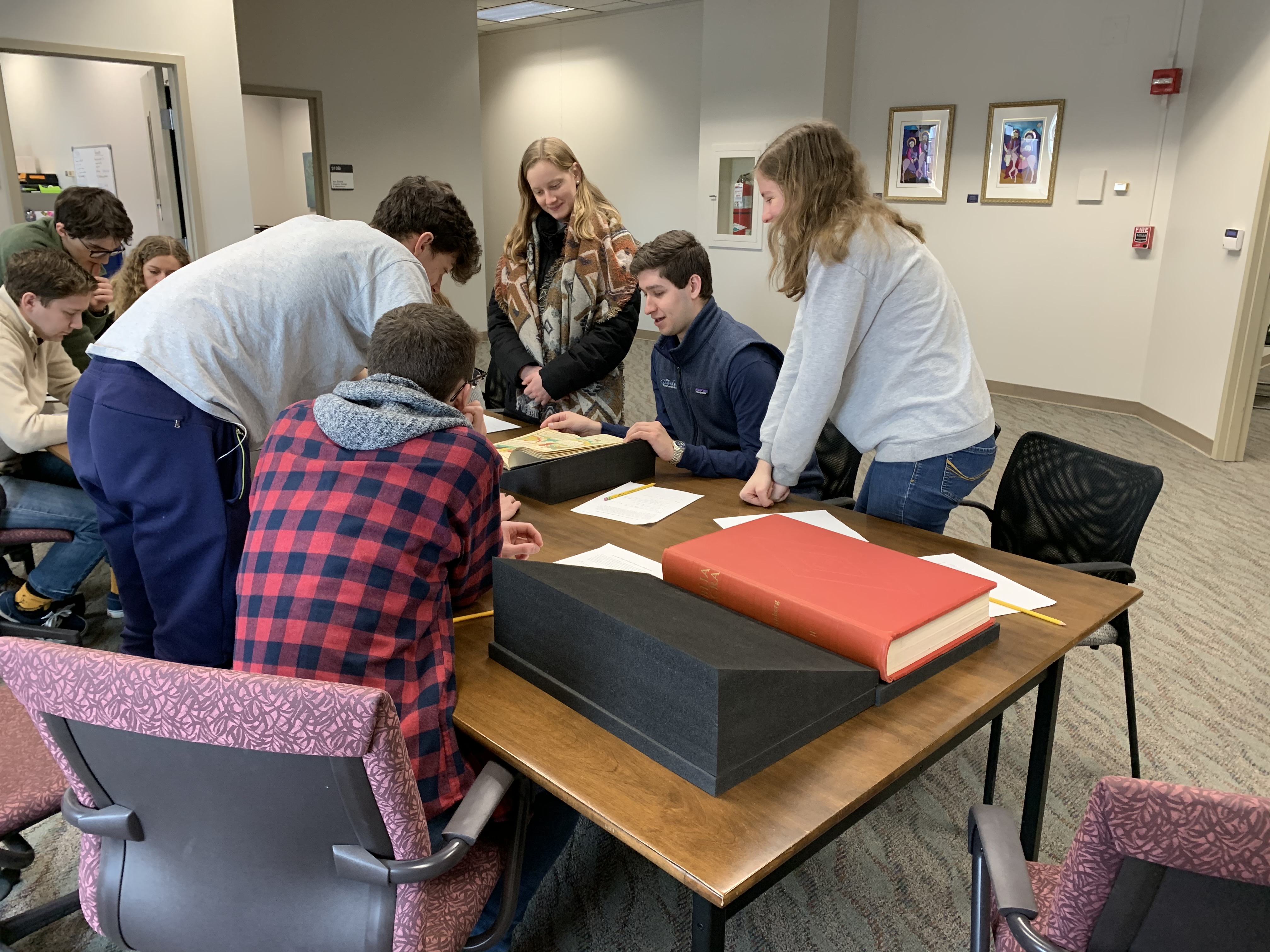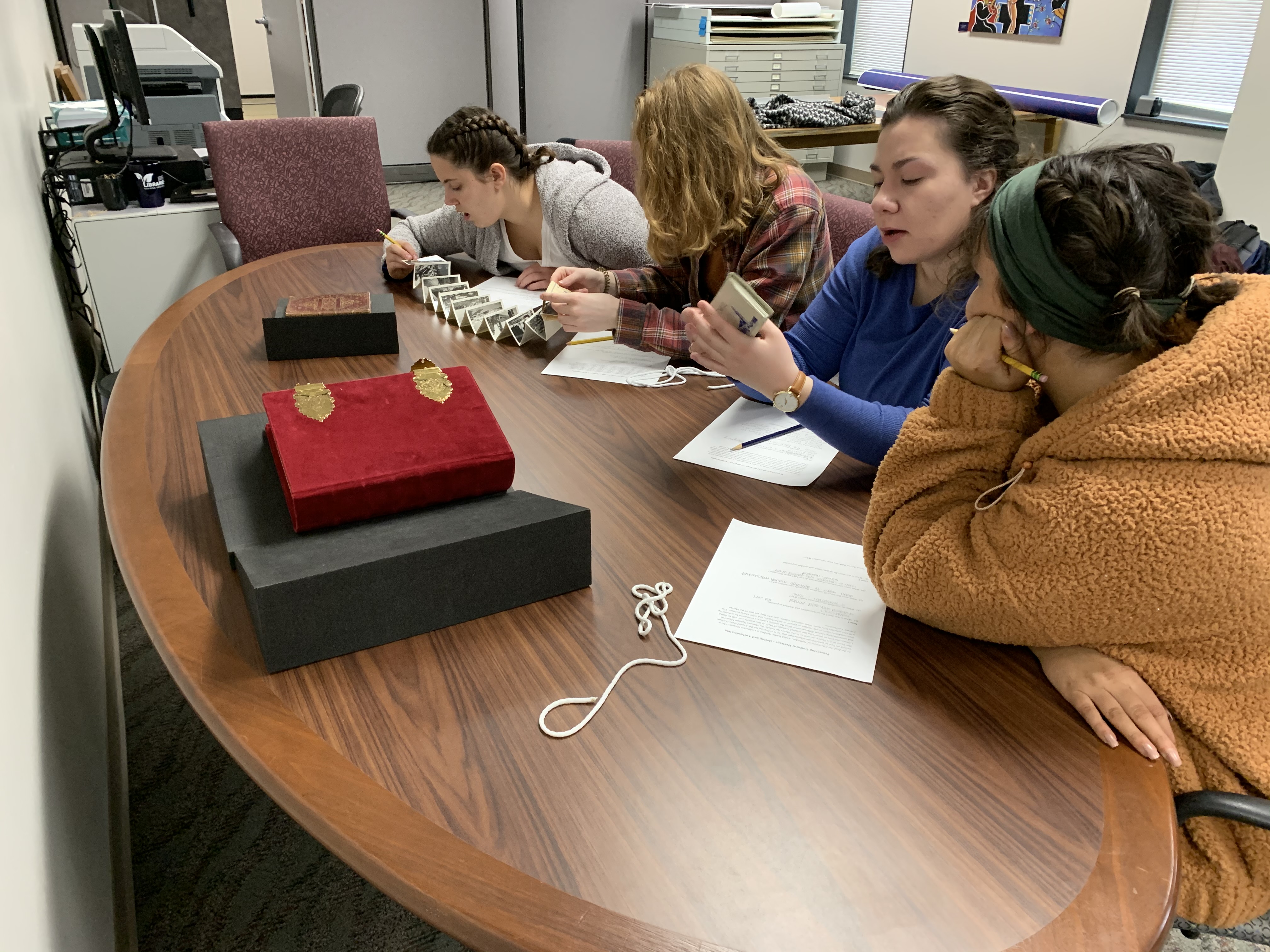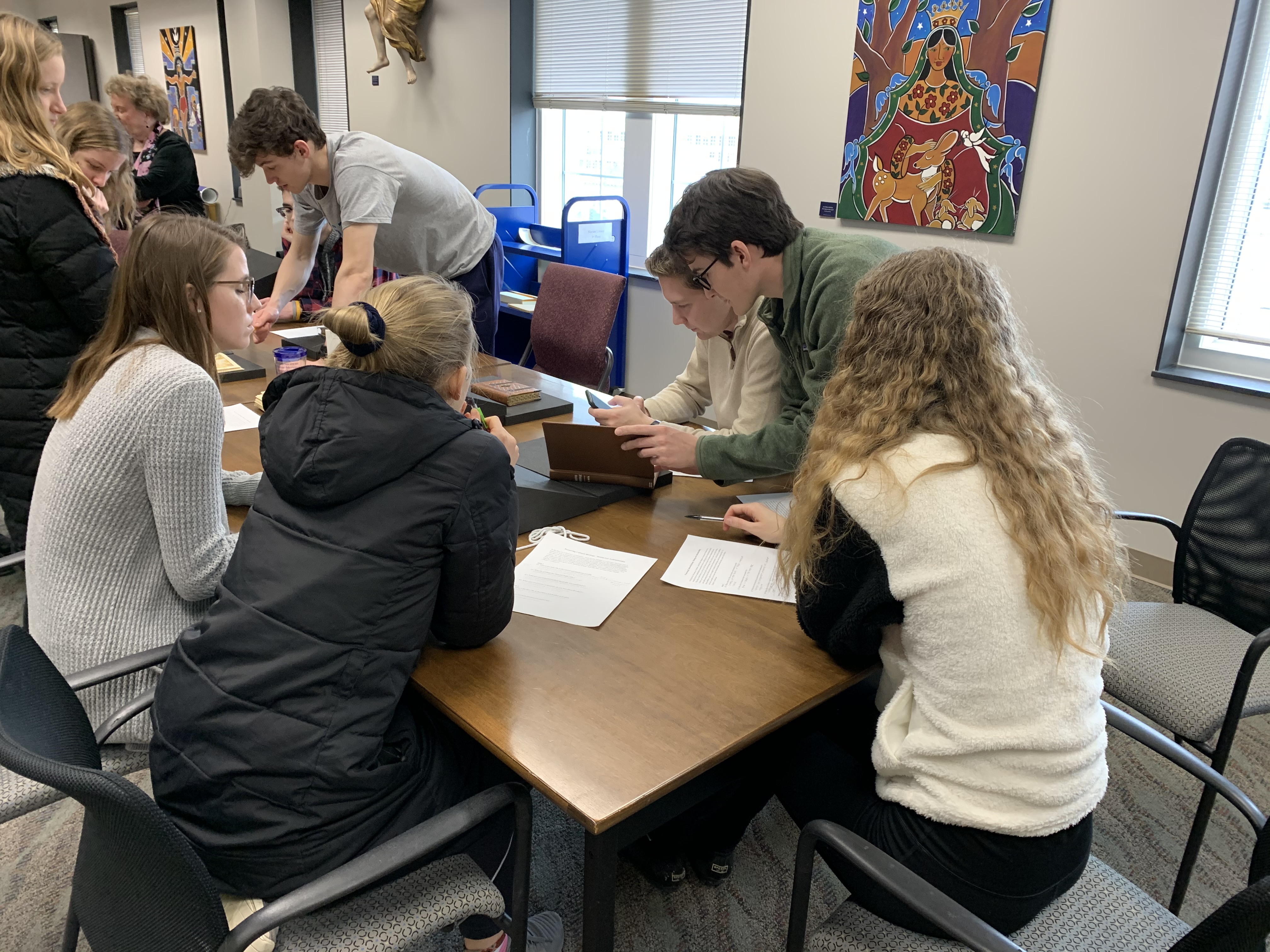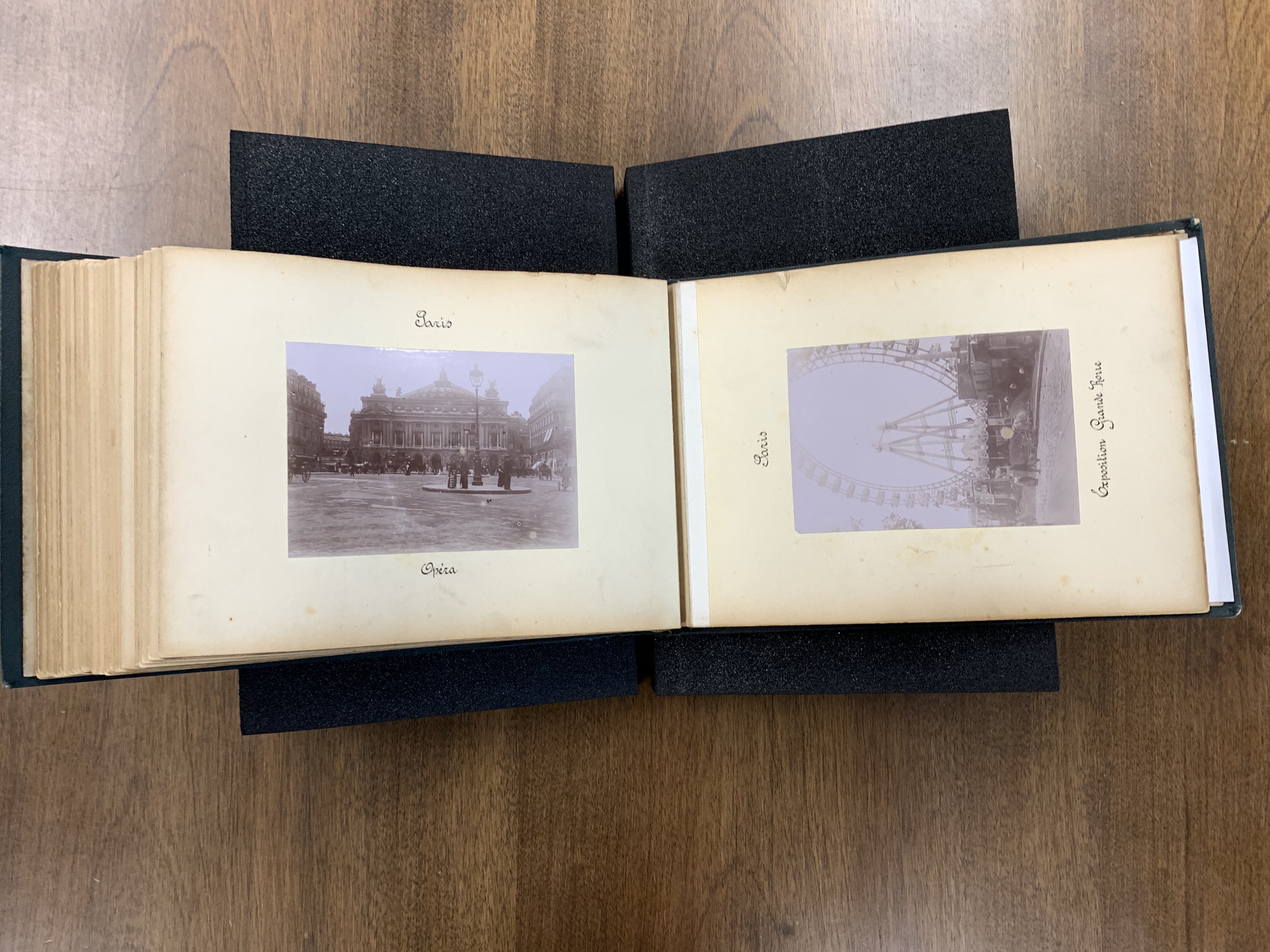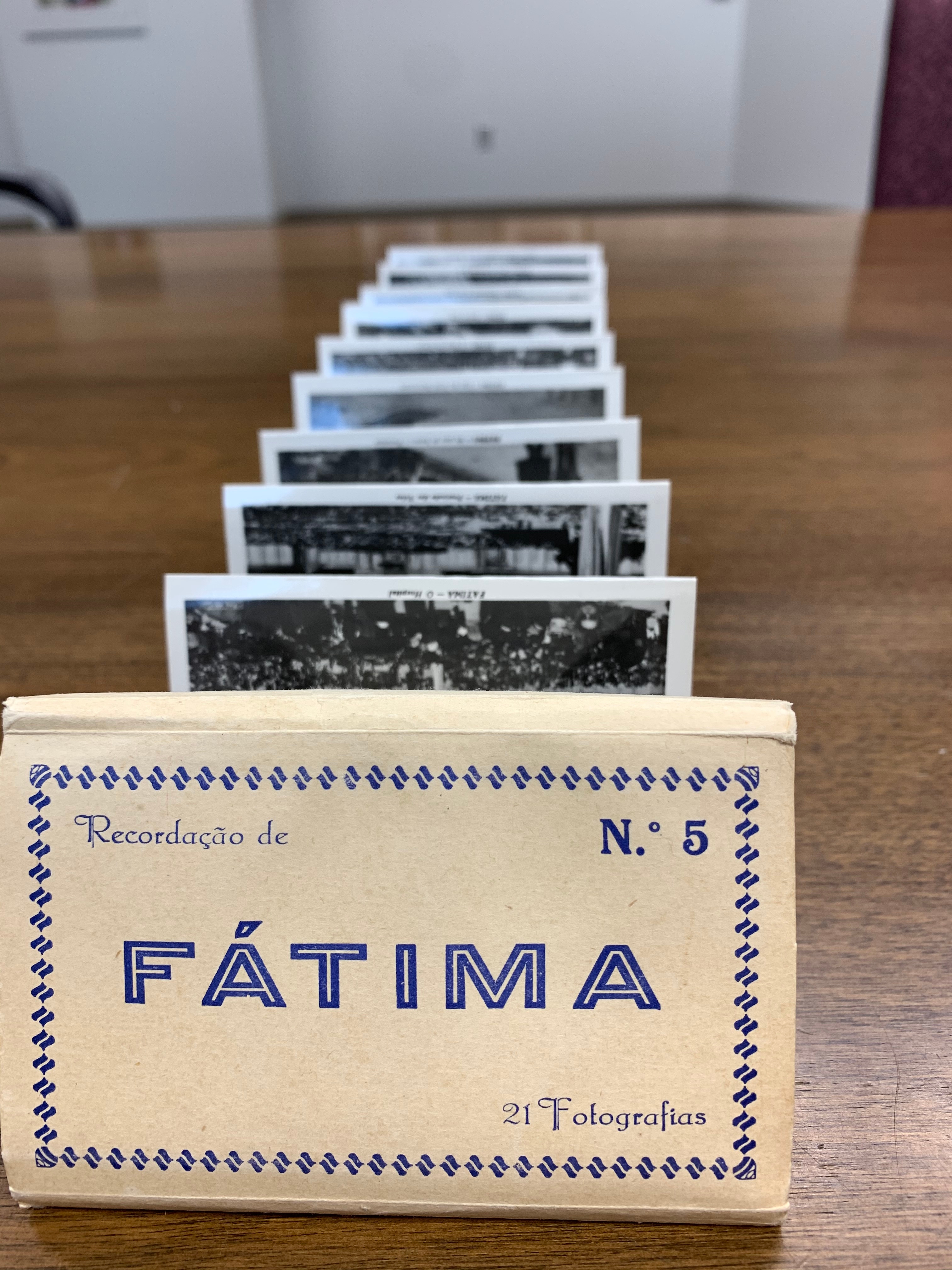Blogs
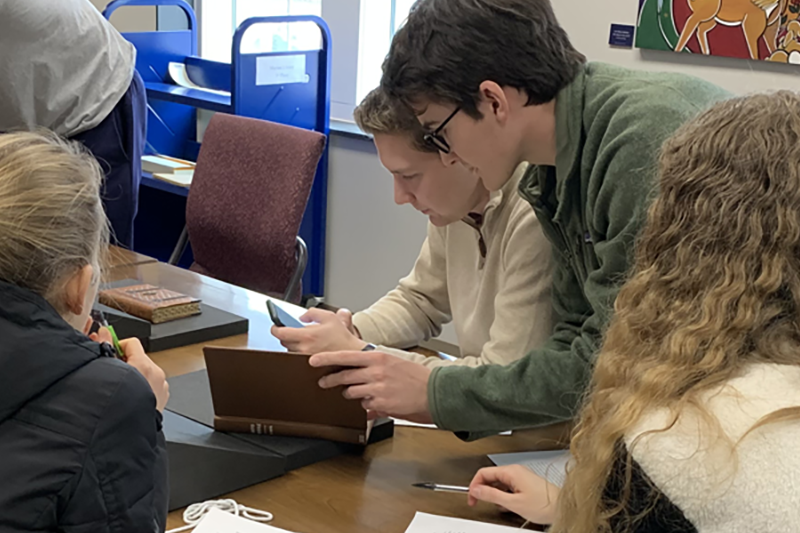
Amateur Archivists
By Kayla Harris
Each semester several undergraduate and graduate classes visit the Marian Library to engage in hands-on activities with the unique materials from our collections. In February, Sister Angela Ann Zukowski, MHSH, brought her class ASI 357, Vocation and the Arts, to the Marian Library for an introduction to special collections. The students read Joshua Hammer’s The Bad-Ass Librarians of Timbuktu: And Their Race to Save the World’s Most Precious Manuscripts, in which Hammer tells the story of an archivist, Abdel Kader Haidara, who helped to collect and preserve manuscripts documenting the important cultural heritage of Mali. These items were threatened when Al Qaeda took over the region, so Haidara organized for the manuscripts to be smuggled out of the country.
The goal for this culminating course of the Chaminade Scholars program is for students to explore how an understanding of and engagement with the arts can help one’s exploration of vocational discernment. Zukowski has brought this class to the Marian Library for the past three years to tour the spaces, discuss vocation, and work with primary source material. Students learn about the work of archivists — preserving cultural heritage — and are introduced to items in the Marian Library’s collections that connect to the University of Dayton’s identity as a Catholic, Marianist institution.
During this year’s visit, students worked in small groups to authenticate and date a group of items from the archives and rare book collections. In Bad-Ass Librarians, Haidara spent years traveling throughout Mali collecting and authenticating manuscripts. In this exercise, students were given a mix of authentic primary source materials, such as a scrapbook made by schoolchildren in Italy, as well as some facsimiles (copies) such as a 2006 copy of the Bedford Book of Hours held by the British Library in London.
Students were asked to determine an approximate date each item was created, using different contextual clues depending on the item. This activity illustrated the uncertainty that archivists confront when organizing and describing materials. For example, with an accordion-style packet of postcards from Fatima, Portugal, students noted the clothing details of individuals in the images to give an approximate date of 1950. Another group looked up Roman numerals to date a book from the late 1800s and noted that book just “smelled old.”
One group of students even helped to update a catalog record with a more precise date. As most archival materials are unpublished, they often do not have a precise date. Viewing a photograph album of various Catholic sites and points of interest in France, a student observed a Ferris wheel in a photograph from Paris. Although the catalog record had indicated the album was from circa 1880, the student noted that the Ferris wheel was actually the Grande Roue de Paris, built in 1900 for the world’s fair, or the Paris Exhibition. Although this still doesn’t provide an exact date of origin, the known construction and disassembly dates of the Grand Roue de Paris provide a more precise approximation.
While we hope that the students learn something each time they visit, we in the Marian Library learn just as much from them!
— Kayla Harris is a librarian and archivist in the Marian Library.

